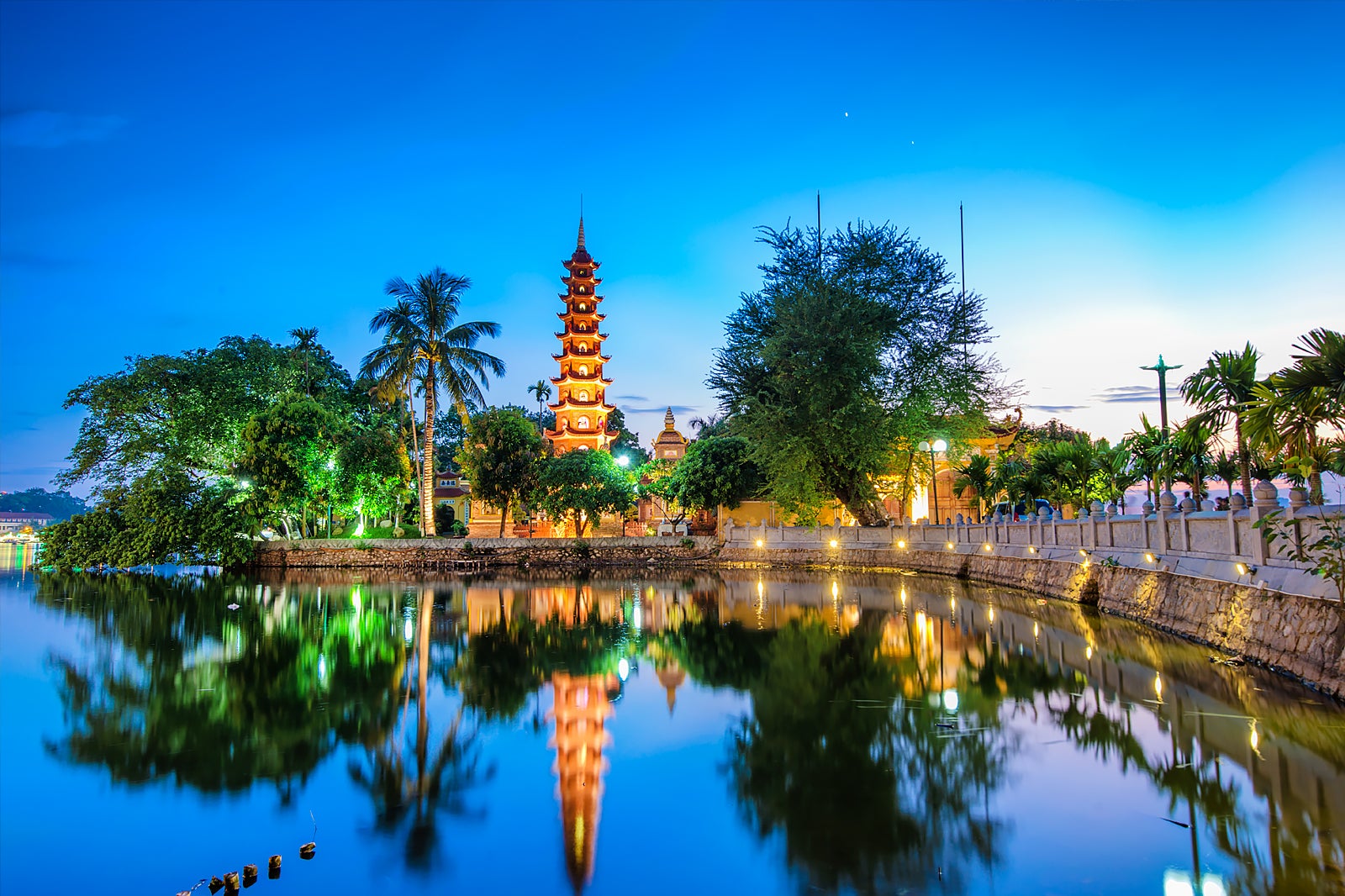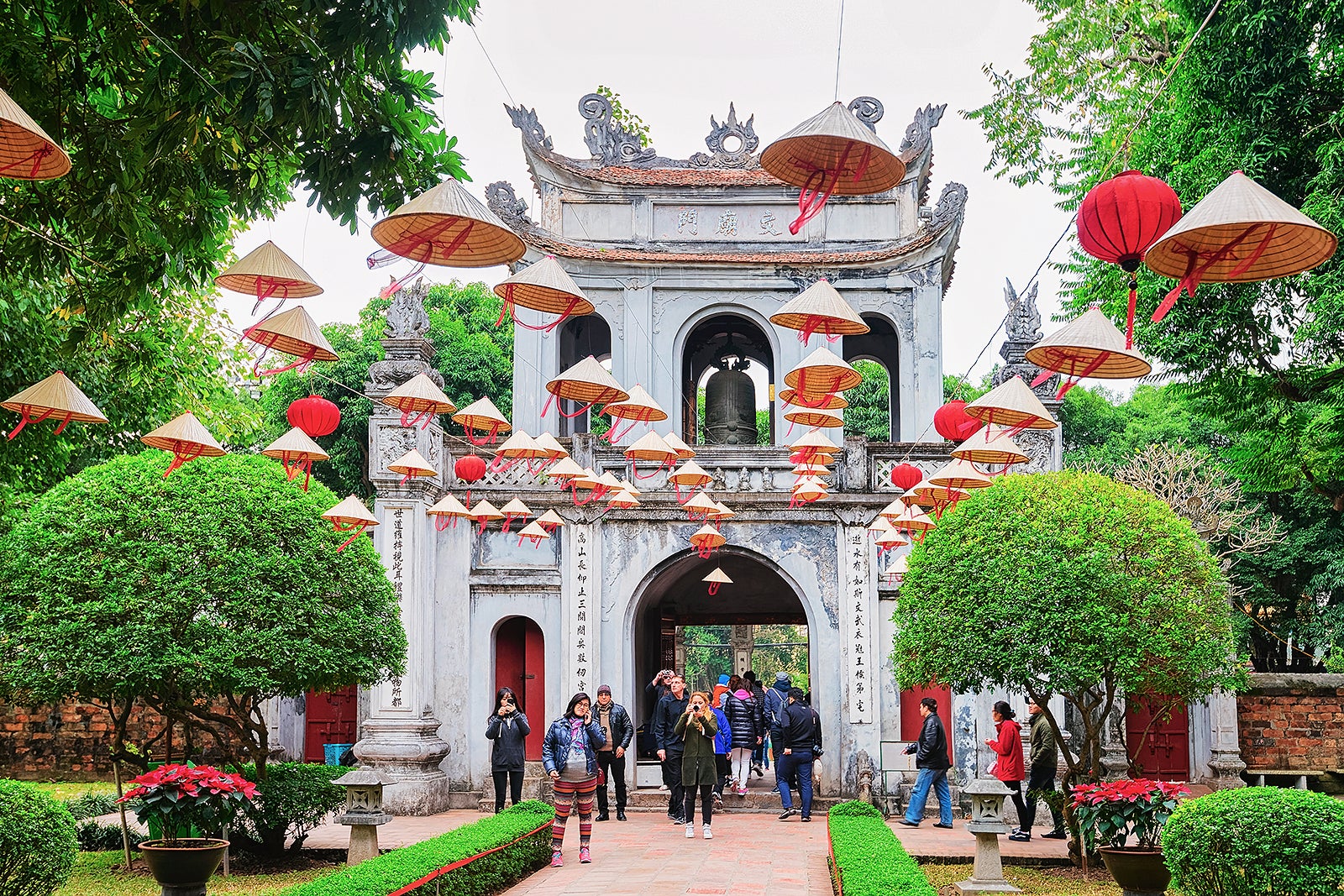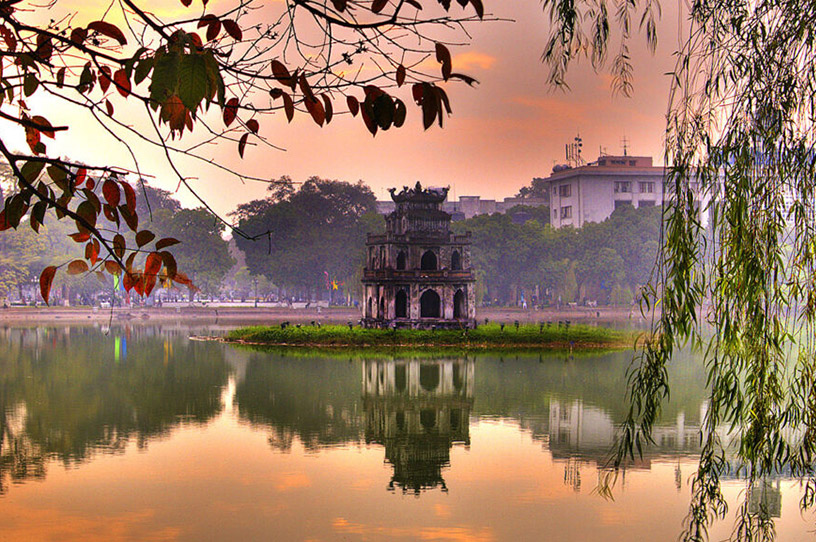
Hanoi, the vibrant capital of Vietnam, is a city that captivates the senses. A symphony of honking motorbikes, the aroma of pho wafting from street stalls, and the intricate beauty of ancient temples and colonial architecture all contribute to its unique charm. More than just a bustling metropolis, Hanoi is a living testament to Vietnam’s rich history, resilience, and enduring spirit. This article delves into the heart of Hanoi, exploring its top attractions, offering practical travel tips, and guiding you through everything you need to know to plan an unforgettable experience.
A Glimpse into Hanoi’s History
Hanoi’s history is as complex and layered as its cuisine. The city’s origins can be traced back over a thousand years, with its strategic location on the Red River making it a vital trading hub. From its early days as Thang Long (Ascending Dragon), the city served as the capital of various Vietnamese dynasties, each leaving its mark on the architectural landscape and cultural traditions.

Related Articles about Hanoi: A Journey Through Time and Taste:
- Denmark’s Crown Jewels: A Journey Through the Best Hotels and Enchanting Experiences
- Discover the Jewel of the Levant: Your Ultimate Guide to Exploring Lebanon
- Portugal: A Tapestry of Sun-Kissed Shores, Ancient History, and Vibrant Culture
- Cairo: A Timeless Tapestry of Ancient Wonders and Modern Marvels
- The Concrete Jungle Where Dreams Are Made Of: Your Ultimate Travel Guide to New York City
- Ly Dynasty (1009-1225): This period saw the construction of numerous temples and pagodas, many of which still stand today, reflecting the influence of Buddhism.
- Tran Dynasty (1225-1400): Resilient against Mongol invasions, the Tran Dynasty fostered a strong sense of national identity.
- Le Dynasty (1428-1788): This period witnessed a golden age of Vietnamese culture, with advancements in art, literature, and architecture.
- French Colonial Period (late 19th – mid 20th century): The French left an indelible mark on Hanoi, constructing grand boulevards, elegant villas, and iconic buildings that still define the city’s character.
- War Years and Independence: Hanoi played a central role in Vietnam’s struggle for independence, enduring years of conflict before finally becoming the capital of a unified Vietnam in 1976.
Today, Hanoi stands as a symbol of Vietnam’s past and its embrace of the future, a city where ancient traditions coexist harmoniously with modern aspirations.
Top Attractions: A Journey Through Hanoi’s Heart

Hanoi offers a plethora of attractions, each offering a unique glimpse into its rich history and vibrant culture. Here are some of the must-see destinations:
-
Hoan Kiem Lake & Ngoc Son Temple: At the heart of Hanoi lies Hoan Kiem Lake, a tranquil oasis surrounded by lush greenery. The lake is steeped in legend, most notably the tale of the giant turtle who returned a magical sword to its rightful owner. At the lake’s northern end sits Ngoc Son Temple (Temple of the Jade Mountain), a picturesque structure accessible via a vibrant red bridge called The Huc Bridge. The temple houses a temple dedicated to General Tran Hung Dao, who played a significant role in defending the country from invaders, as well as a large turtle specimen.
-
The Old Quarter: A labyrinthine network of narrow streets, the Old Quarter is Hanoi’s bustling commercial heart. Each street historically specialized in a particular trade, and many still retain those names today. Wandering through the Old Quarter is a sensory overload, with shops overflowing with goods, street vendors hawking their wares, and the constant hum of activity. Don’t miss the opportunity to sample local delicacies like pho, bun cha, and banh mi from the street food stalls.
-
Ho Chi Minh Mausoleum & Complex: A solemn and respectful site, the Ho Chi Minh Mausoleum houses the preserved body of the revered Vietnamese leader. Adjacent to the mausoleum are Ho Chi Minh’s stilt house, where he lived and worked, and the One Pillar Pagoda, a unique Buddhist temple built in the 11th century. Visitors should dress respectfully (covered shoulders and knees) and be prepared for potential queues.
-
Temple of Literature: Established in 1070 as Vietnam’s first university, the Temple of Literature is a serene and historically significant complex. Dedicated to Confucius, the temple features courtyards, pavilions, and stelae bearing the names of scholars. It offers a glimpse into Vietnam’s rich educational history and Confucian values.
-
Imperial Citadel of Thang Long: A UNESCO World Heritage site, the Imperial Citadel of Thang Long is a testament to Hanoi’s long history as a political and cultural center. Archaeological excavations have revealed the remnants of palaces, temples, and other structures dating back to the 11th century. Explore the underground bunkers and learn about the citadel’s strategic importance throughout history.
-
Hoa Lo Prison (Hanoi Hilton): A poignant reminder of Vietnam’s wartime history, Hoa Lo Prison served as a prison for both Vietnamese revolutionaries and, later, American prisoners of war. The exhibits offer a somber yet important perspective on the country’s struggle for independence and the harsh realities of war.
-
Water Puppet Theatre: A unique and captivating form of Vietnamese art, the Thang Long Water Puppet Theatre showcases traditional folk tales and historical events through the use of puppets manipulated from behind a screen of water. The vibrant music and skilled puppeteers make for an engaging and memorable experience.
-
Tran Quoc Pagoda: One of the oldest pagodas in Hanoi, Tran Quoc Pagoda offers stunning views of West Lake. Its ornate architecture and serene atmosphere make it a perfect spot for reflection and photography.
-
Museums: Hanoi is home to a wealth of museums that provide a deeper understanding of Vietnam’s history, art, and culture. Consider visiting the Vietnam National Museum of History, the Vietnam Museum of Ethnology, and the Fine Arts Museum.
Travel Tips for a Smooth Journey
- Visa Requirements: Check visa requirements based on your nationality well in advance of your trip. E-visas are available for many nationalities.
- Currency: The Vietnamese Dong (VND) is the local currency. US dollars are also widely accepted, particularly for larger transactions, but you’ll likely receive a better exchange rate using VND. ATMs are readily available throughout the city.
- Language: Vietnamese is the official language. English is spoken in tourist areas, but learning a few basic Vietnamese phrases will enhance your experience.
- Transportation:
- Taxis: Metered taxis are readily available and generally reliable. Use reputable companies like Mai Linh or Vinasun.
- Motorbikes (Xe Om): A quintessential Hanoi experience, motorbike taxis (xe om) are a convenient way to navigate the city’s crowded streets. Negotiate the price beforehand.
- Ride-hailing apps: Grab is a popular ride-hailing app in Southeast Asia that can be used for both taxis and motorbike taxis.
- Walking: The Old Quarter and other central areas are best explored on foot.
- Bargaining: Bargaining is common in markets and with street vendors. Start with a lower price and negotiate respectfully.
- Street Food Safety: Hanoi’s street food is legendary, but it’s important to be mindful of food safety. Choose stalls with high turnover and observe the cleanliness of the environment.
- Traffic: Hanoi’s traffic can be chaotic. Be cautious when crossing the streets and watch out for motorbikes.
- Respectful Dress: When visiting temples and religious sites, dress respectfully by covering your shoulders and knees.
- Stay Hydrated: The climate can be hot and humid, so be sure to drink plenty of water.
- Be Aware of Scams: Be wary of scams, especially those targeting tourists. Don’t be afraid to say no.
- Learn a Few Basic Vietnamese Phrases: Even a few basic Vietnamese phrases like "Xin chào" (hello), "Cảm ơn" (thank you), and "Bao nhiêu?" (how much?) will enhance your interactions with locals.
Accommodation Options: Finding Your Perfect Base
Hanoi offers a wide range of accommodation options to suit all budgets and preferences.
- Luxury Hotels: The city boasts a selection of luxurious hotels with excellent amenities, including the Sofitel Legend Metropole Hanoi, known for its colonial charm and impeccable service.
- Boutique Hotels: Many boutique hotels are located in the Old Quarter and offer a more intimate and personalized experience. These hotels often feature stylish decor and are housed in beautifully restored buildings.
- Mid-Range Hotels: Numerous mid-range hotels offer comfortable accommodations at reasonable prices. These hotels are often located in central areas and provide a good balance of value and comfort.
- Budget Hostels: Hostels are a popular choice for budget travelers, offering dorm rooms and private rooms at affordable prices. Many hostels are located in the Old Quarter and offer social activities and tours.
- Homestays: Experience Vietnamese hospitality by staying in a homestay. This allows you to interact with local families and learn about Vietnamese culture firsthand.
Transportation: Navigating the City
Hanoi’s transportation options are diverse, reflecting the city’s blend of tradition and modernity.
- Walking: The best way to experience the Old Quarter and its surrounding areas is on foot.
- Cyclo: A cyclo ride is a leisurely way to see the sights, particularly in the Old Quarter. Negotiate the price beforehand.
- Taxi: Metered taxis are readily available and generally reliable. Use reputable companies.
- Motorbike (Xe Om): Motorbike taxis are a convenient and thrilling way to navigate the traffic. Negotiate the price.
- Grab: Use the Grab app for both taxis and motorbike taxis.
- Bus: Hanoi has a comprehensive bus network, which is a budget-friendly way to get around.
- Train: The train station connects Hanoi to other parts of Vietnam.
Best Time to Visit
The best time to visit Hanoi is during the shoulder seasons, from March to April or September to November. During these months, the weather is pleasant, with mild temperatures and lower humidity.
- March-April: The weather is warm and sunny, with low rainfall. This is a great time to explore the city without the oppressive heat of summer.
- September-November: The weather is cool and dry, with clear skies. This is a perfect time for outdoor activities and sightseeing.
- Summer (May-August): The weather is hot and humid, with high rainfall. While the prices may be lower, the heat can be uncomfortable.
- Winter (December-February): The weather is cool and dry, but it can be chilly, especially in the evenings.
Conclusion: Embracing the Hanoi Experience
Hanoi is a city that lingers in the memory long after you’ve left. Its vibrant streets, historical landmarks, delicious cuisine, and warm hospitality create an unforgettable experience. By embracing the chaos, savoring the flavors, and immersing yourself in the culture, you’ll discover the true magic of Hanoi. From exploring ancient temples and wandering through the Old Quarter to indulging in the delectable street food and experiencing the city’s vibrant nightlife, Hanoi offers something for every traveler. So, pack your bags, embrace the adventure, and prepare to be enchanted by the captivating charm of Hanoi.





